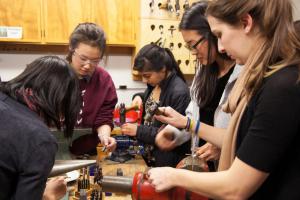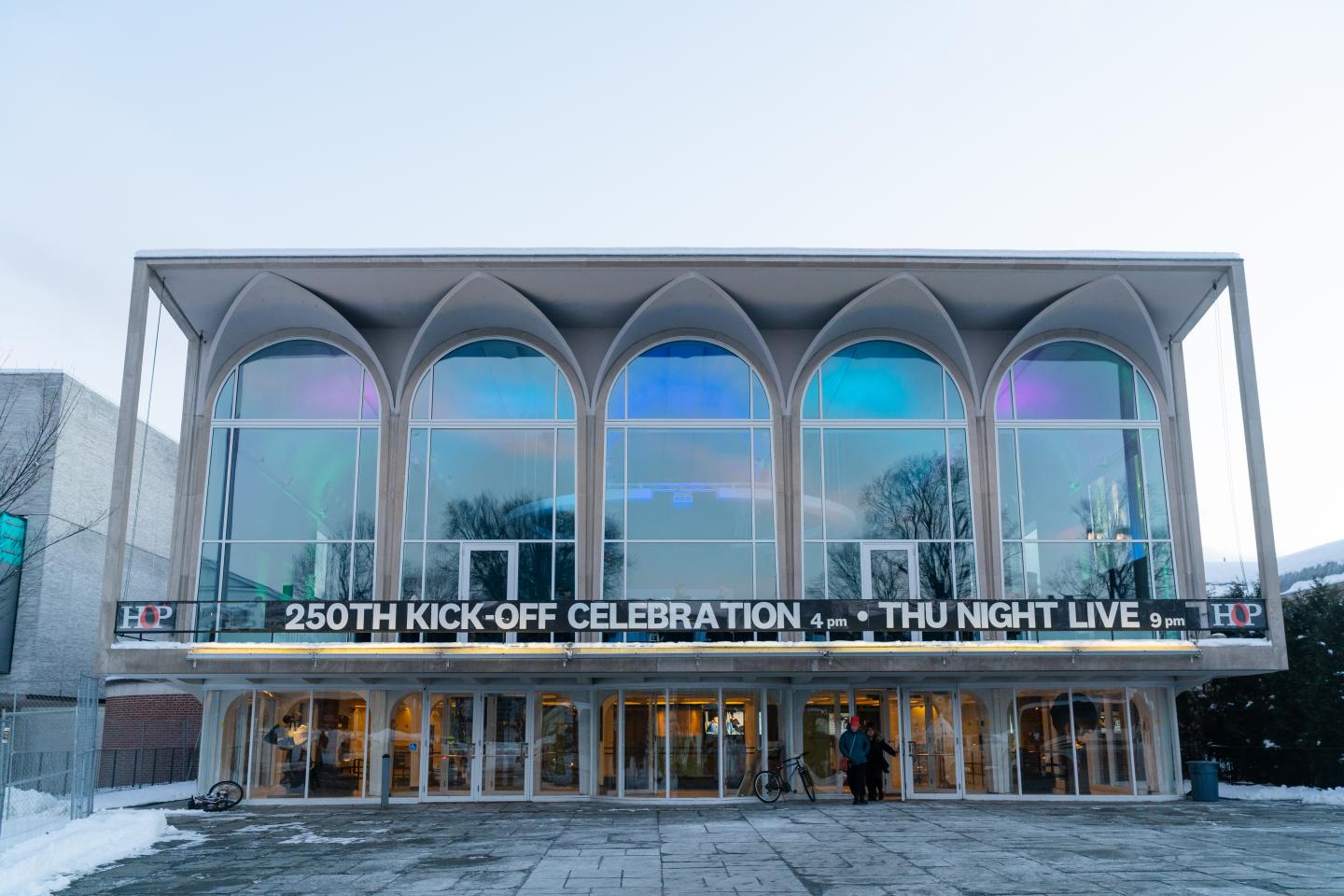
Friends of Student Workshops at the Hopkins Center for the Arts
Help give our students new ways to explore and express their creativity.
$15 million for Hopkins Center for the Arts jumpstarts fundraising to transform the campus icon

Dartmouth’s flourishing Arts District is a step closer to completion, thanks to $15 million in commitments from members and friends of the Hopkins Center for the Arts Board of Advisors.
The gifts—announced April 18 by President Philip J. Hanlon ’77 at a Dartmouth campaign and 250th anniversary celebration in Los Angeles—serve as a fundraising kickoff for the Hopkins Center’s planned $75 million revitalization.
“We have long aspired to elevate creativity throughout our campus,” President Hanlon said at the Los Angeles event. “This generous investment by members of the Hopkins Center Board will help us enhance creative expression within our liberal arts offerings and ensure that students and faculty can create and produce original works in an exceptionally supportive environment.”
When it first opened in 1962, the Hopkins Center defined what a university arts center should be: a central location where students, faculty, visiting artists, and the public come together to create, experience, and interpret new work.
When the renovation and expansion of the Hop is complete, it will provide flexible, technology-driven performance and maker spaces, and will also bring together students and arts faculty within the heart of the district in order to encourage collaborative creativity and learning across disciplines and genres.
The plan focuses on three overarching goals:
• to be a welcoming, magnetic center for all of Dartmouth and the world;
• to convene arts faculty, students, and visiting artists for greater and deeper collaborations;
• and to move to a creation space in addition to its historic role as a presentation space.
Already, the Hopkins Center, Hood Museum of Art, and Black Family Visual Arts Center form the core of a strong and growing district focused on creativity.
The recently expanded Hood Museum provides multiple dedicated spaces for object-based, hands-on, educational encounters with art that are also creating new cross-disciplinary points of engagement with Dartmouth’s professional schools. The Black Family Visual Arts Center, opened in 2012, is home to the departments of studio art, film and media studies, and digital humanities.
A cutting-edge Hop with new spaces including a flexible theater facility and centralized offices for music, theater, and dance, and renovated spaces including Top of the Hop and Alumni Hall, will engage the entire Dartmouth community, said Mary Lou Aleskie, Howard Gilman ’44 Director of the Hop.
“Our mission is to fully realize the centrality of the Hop to campus life,” Aleskie said.
“We want to encourage all our students to venture in and explore the world of creation, and, no matter their major, make creativity a core component of their Dartmouth experience.”
Beneficiaries will include students, faculty members, and visiting artists who use the arts for creative expression as well as faculty and students across disciplines who present and analyze the arts and shape critical thought. The wider Dartmouth and Upper Valley communities also will be enriched by the art created and practiced in the space.
The Hopkins Center project is a major component of The Call to Lead: a Campaign for Dartmouth. With a $3 billion goal—more than $2 billion already has been raised—the campaign is the most ambitious fundraising effort in Dartmouth’s 250-year history.
Learn more about supporting this project by emailing calltolead@dartmouth.edu.